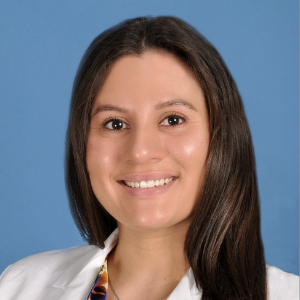Title : Examining socioeconomic factors in physical and occupational therapy distribution: Insights for total joint arthroplasty
Abstract:
Physical and Occupational therapy (PT/OT) are critical for optimizing outcomes and reducing complications following orthopaedic surgery. Lower socioeconomic status (SES) is associated with reduced access to healthcare and increased rates of surgical complications. The purpose of our study is to establish the relationship between SES and access to PT/OT.We compiled county-level population, land area, and business data from 2020 United States (US) Census Bureau Reports. SES data was collected from the 2020 Centers for Disease Control Social Vulnerability Index (SVI) and Area Deprivation Index (ADI). PT/OT businesses were identi?ed using the North American Industry Classi?cation System code 621340. Density of business by county population and land area were calculated and regression analyses performed to determine a correlation between SES and these measures. Counties with greater density of PT/OT tended to be on the East Coast while those with lower density were located in the Western US. There was a strong inverse relationship between county-level ADI and PT/OT density (R2= 0.97 and 0.94). Overall SVI displayed a variable relationship with PT/OT density. The Household Characteristics and SES domains of the SVI demonstrated an inverse relationship with PT/OT density (R2= 0. 68, 0.49 and R2= 0.59, 0.28, respectively). Race and ethnicity displayed an inverse parabolic relationship with PT/OT density based on population alone (R2= 0.83 and 0.57). However, there was a mild positive correlation between race and ethnicity when considering population and land area (R2= 0.39 and 0.22). PT/OT are important for post-operative care, however signi?cant barriers to access exist. There is an inverse correlation between the density of PT/OT services and SES measures, particularly ADI. This may impact post-operative recovery and complication rates in orthopaedic patients.
What will audience learn from your presentation?
- Geographic Disparities: The study reveals geographic disparities in the distribution of physical and occupational therapy services across the United States, with higher densities observed on the East Coast compared to the Western US.
- Socioeconomic Status and Access: Lower socioeconomic status (SES), as measured by the Area Deprivation Index (ADI), is strongly correlated with reduced access to physical and occupational therapy services. This suggests that individuals in more deprived areas may face signi?cant barriers to accessing essential post-operative care.
- Social Vulnerability Index (SVI) Variability: While overall SVI displayed a variable relationship with PT/OT density, speci?c domains such as Household Characteristics and SES showed a clear inverse relationship. This highlights the nuanced nature of socioeconomic factors in?uencing access to therapy services.
- Race and Ethnicity Factors: There is an inverse parabolic relationship between race and ethnicity and PT/OT density based solely on population demographics. However, when considering both population and land area, there is a mild positive correlation, suggesting that geographical factors may in?uence the distribution of therapy services among di?erent racial and ethnic groups.
- Implications for Orthopaedic Patients: The ?ndings underscore the signi?cance of access to physical and occupational therapy for post-operative care in orthopaedic patients. The observed inverse correlation between therapy density and SES measures, particularly ADI, implies potential impacts on post-operative recovery and complication rates, indicating a need for targeted interventions to address disparities in access to care.
- International Implications: The results of this study can o?er valuable insights and potential strategies for improving access to physical and occupational therapy services in other countries, especially those facing similar challenges related to socioeconomic disparities and healthcare access. Overall, the ?ndings of this study provide valuable insights and methodological approaches that can be adapted and applied by other countries to improve access to physical and occupational therapy services, particularly for vulnerable populations. By addressing socioeconomic barriers and geographic disparities, countries can work towards achieving more equitable healthcare systems and better outcomes for orthopaedic patients




